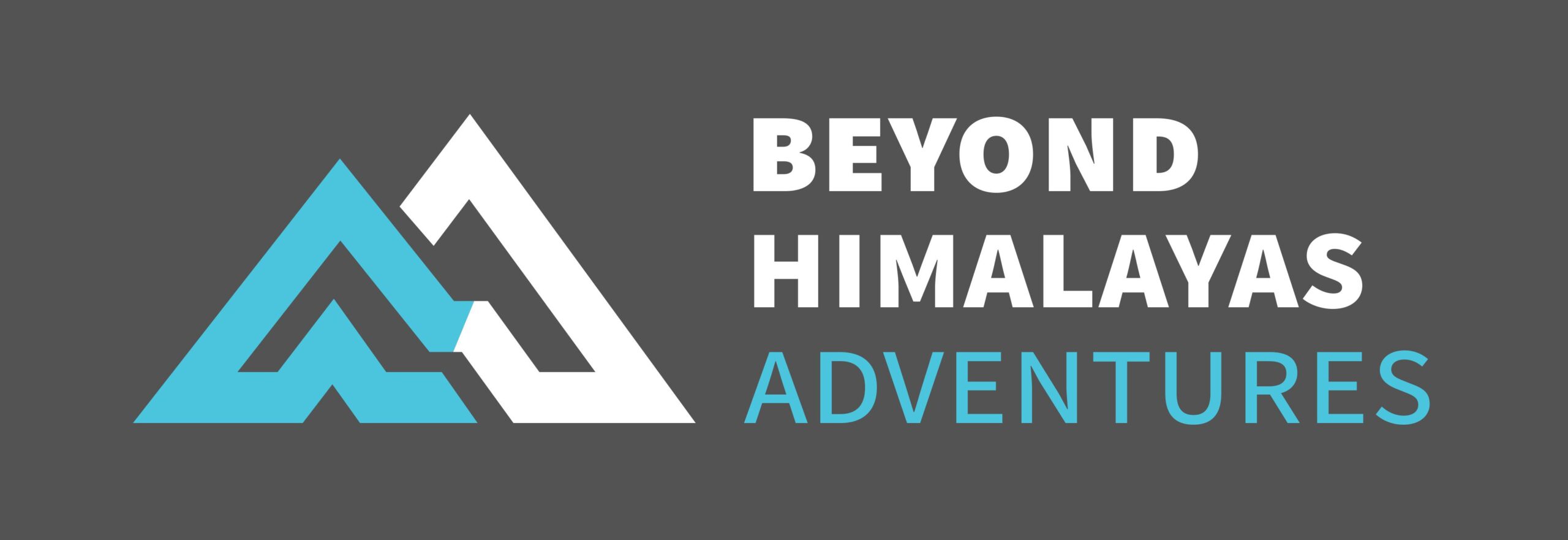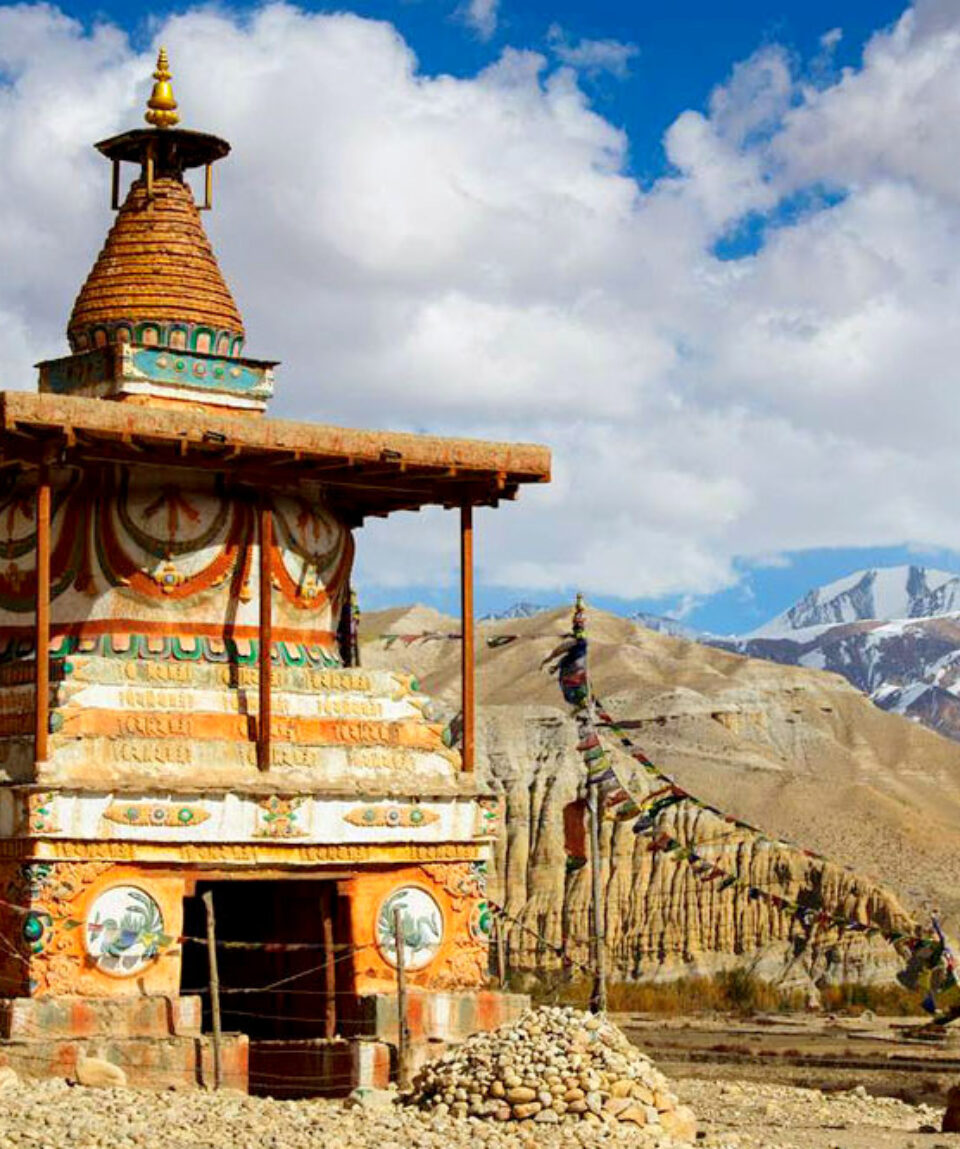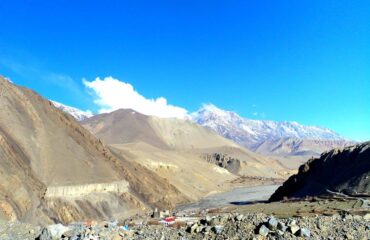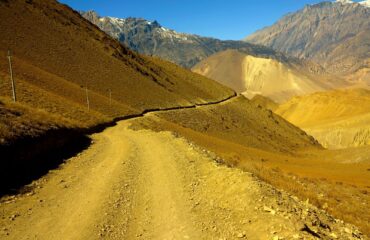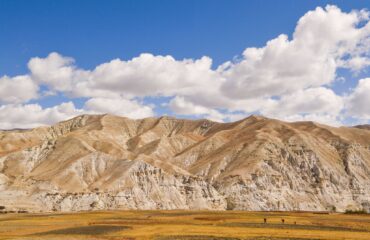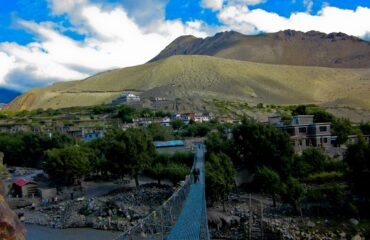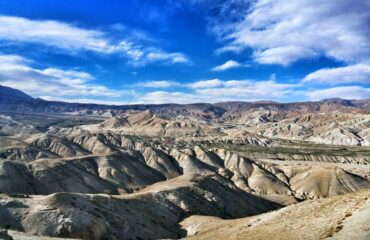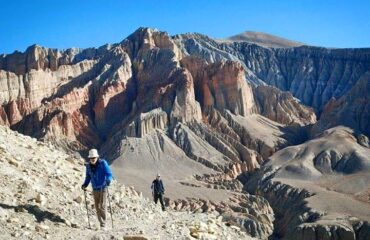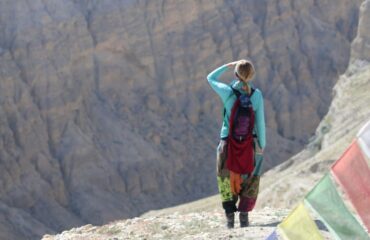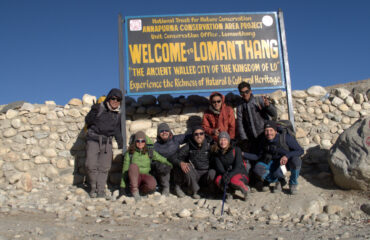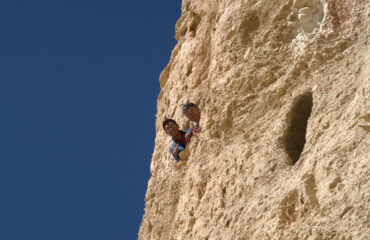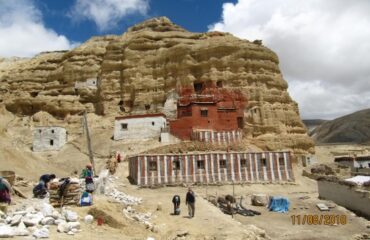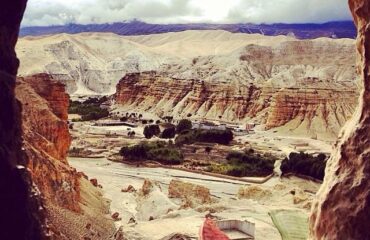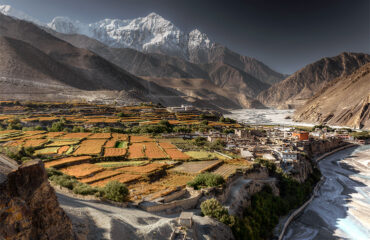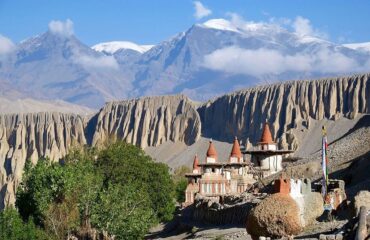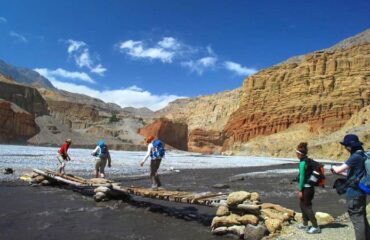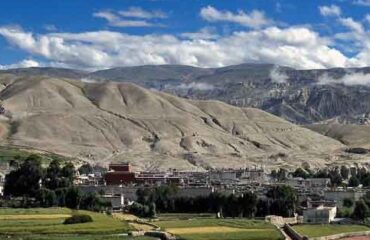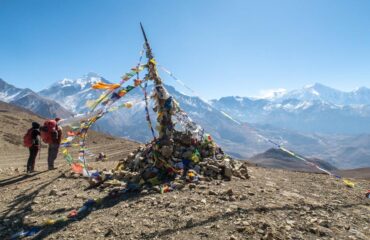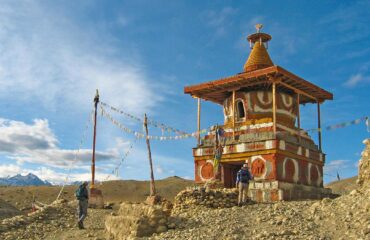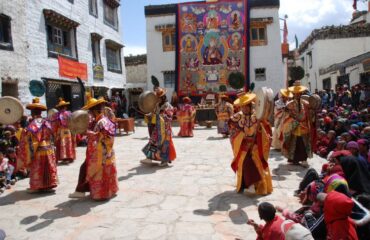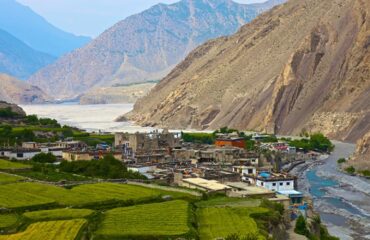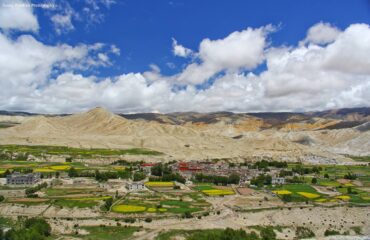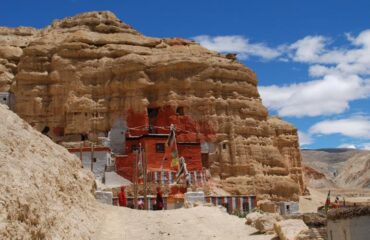Upper Mustang Trekking
fromTrek to Lo Mangthan in Upper Mustang on a spectacular trans-Himalayan journey and Soak in the magnificent views of Nilgiri, Annapurna, and Dhaulagiri and experience unique culture in the Last Forbidden Kingdom.
-
Reviews 0 Reviews0/5
-
Vacation Style Holiday Type
-
Hiking
-
-
Activity Level Challenging
-
Group Size Medium Group
The Upper Mustang trek takes you on the spectacular remote Trans-Himalayan journey to Nepal in the Region of Lo Mangthan in Upper Mustang. This trek offers trekkers spectacular trekking through the striking semi-arid desert with colorful rock formations, deep ravines, and snow-capped peaks surrounding you. The history, culture, myth, and legend blend perfectly with the stunning scenery.
Upper Mustang Trek is a chance to explore isolated areas around the north of the Annapurna region. During our Upper Mustang Trekking, we find many similarities between the cultures, traditions and lifestyles of Tibetan people. Along with Tibetan Buddhism influenced culture and traditions, the topographical structure is also quite similar. This place is also called mini Tibet due to similar beautiful trans-Himalayan landscapes. Visiting the Lo-Manthang palaces, local monasteries while witnessing the best of culture and nature are highlights of this Upper Mustang Trek.
Upper Mustang Trek is accessible all year round as this region is a trans-Himalayan region where very little rainfall is received even during the monsoon. Therefore, if you are physically fit and want to explore the less explored region of Nepal; then plan for Upper Mustang Trek with us
- Airport transfers and escort.
- All meals during trek. (breakfast, lunch, dinner, tea, and coffee)
- Accommodation during the trek at the local lodges.
- Domestic airfares and transportation from Kathmandu to the trek starting point.
- English speaking government-licensed Sherpa trekking guide & assistant guide (4 trekkers=1 assistant guide)
- Porter Service (2 Trekker =1 porter)
- Staff cost including their (wages, insurance, food, and accommodation)
- All national park and conservation area fees
- Special permits to enter upper mustang
- 3 nights accommodation at 3-star category hotel in Kathmandu on twin sharing with breakfast.
- All guided sightseeing tours in Kathmandu and entry fees.
- All ground transportation on comfortable private vehicle
- All government and local taxes
- International airfares
- International Airport Departure Tax and entry visa fees
- Trekking Equipment
- Major meals, Lunch and dinner during your stay in Kathmandu
- Any type of personal expenses, such as alcoholic beverages and drinks, phone, and laundry.
- Rescue & travel insurance, trip cancellation costs, accident or health emergency, evacuation, loss, theft or damage to baggage, and personal effects.
- Tips & Gratuities to porters and guides
- We strongly advise you to take out personal travel insurance.
- Day 1 Depart Home Country
- Day 2 En Route (Transit)
- Day 3 Arrival in Kathmandu (1,350m/4,429ft)
- Day 4 Kathmandu: Sightseeing and trek Preparation (1,350m/4,429ft)
- Day 5 Drive from Kathmandu to Pokhara (827m/2,713ft) 5-6 hrs
- Day 6 Fly to Jomsom and trek to Kagbeni (2,810m/9,220ft) 3-4 hrs
- Day 7 Trek to Chele (10004ft. 3050m) via Tangbe/Chhusang for lunch.
- Day 8 Chele to Syanbochen (3,475m/11,401ft ) 6-7 hrs
- Day 9 Syanbochen to Ghami (3,520m/11,549ft) 5-6 hrs
- Day 10 Ghami to Tsarang (3,870m/12,697ft) 5-6 hrs
- Day 11 Tsarang to Lo-Manthang (3,730m/12,238ft) via Gar Gumpa 3-4 hrs
- Day 12 Explore Lo Manthang/ Acclimatization (3,730m/12,238ft)
- Day 13 Trek back to Gmami (3,460m/11,352ft)
- Day 14 Trek to Chele (3050m/ 10004ft) or chusang
- Day 15 Trek to Kagbeni (2810m/9216ft). or mukthinath 3800m/12467ft) via Tetang village
- Day 16 Trek to Jomsom
- Day 17 Fly back to Pokhara (827m/2,713ft)
- Day 18 Drive from Pokhara to Kathmandu (1,350m/4,429ft)
- Day 19 Reserved day in Kathmandu
- Day 20 Transfer to airport for international departure
- Day 21 En Route to Home Country
- Day 22 Arrive Home Country
The main emphasis while trekking is on keeping warm and dry while still being lightweight. You should bring a rucksack or backpack for the gear required during the day. Your pack should contain items such as warm clothes, a jacket, a camera, water bottles, a personal first aid kit, and snacks. The weight limit is 5kg. A porter will carry the rest of your personal equipment packed in a duffel or kit bag. The weight limit for your duffel bag is 15 kg however it is different in the case of peak climbing and expedition.
A Note on Packing
For your international flights, we recommend that you pack all your equipment in your two duffle bags or suitcase. Do not simply pack your backpack (since the straps can be damaged by the baggage handling machines). It is important to lock these bags for their trip. Depending on the airport, you may be able to put your travel locks on after TSA has searched the bags. If not, Lock the bags with Zip Ties. If the TSA cuts off the zip-tie to search your bag, they will replace it. You will still need the travel locks to lock your bags in the hotel and during the trek. Generally, you will take one duffel on the trek , and leave one in the hotel in Kathmandu with your belongings for your time in the city. Your trek in duffel will only be accessible in the evenings (with items such as changes of clothing, sleeping bag), and your day pack will hold vitals such as water, layering, blister kit, and camera.
FOOTWEAR
- Hiking Boots with ankle support. Make sure they are comfortable and you have worn them in before arriving in Nepal.
- Camp Shoes or Tennis Shoes
- Thick, warm wool and day hiking socks
- Camp Sandle
- Gaiters (Optional )
- Plastic bag to carry spare shoe
CLOTHING
- Lightweight Trekking pants
- Synthetic T-shirts, long-sleeve shirts
- Synthetic hiking pants, Zip-off pants
- Trekking trousers
- T-shirts – Lightweight, quick-drying
- Long-sleeved shirt
- Fleece jacket with wind-Stopper (With wood)
- Down vest and/or jacket
- Rain jacket or poncho (Gore-tex or equivalent)
- Rain pants (Gore-tex or equivalent)
- Down jacket medium weight
- Fleece or wool pants
- Synthetic Underwear
- Women sports bras, synthetic(for women)
- Waterproof (preferably breathable fabric) shell pants
- Long sleeve tops or shirts (not cotton).
- Microfleece.
- Mid to heavyweight fleece or synthetic/ Primaloft
HEAD & GLOVES
- Fleece gloves.
- Warms mittens and/or gloves.
- Wool or fleece hat.
- Sun hat
- Warm hat wool or synthetic that covers your ears
- Bandana or scarf (eg. Buff Headwear).
- Head torch. Bring extra batteries.
- Sunglasses with UV Protection
ACCESSORIES
- Lightweight Sleeping bag
- Trekking poles
- Basic First Aid Kit
- Daypack (Ruck Sack): Recommended size is around 30 litres. You need to have enough space to carry water
bottles, camera, snacks, and extra clothing. The pack should have a good waist belt. It is also a good
idea to bring a rain cover to keep the contents dry - Fleece or silk liner for your sleeping bag
- Stuff sacks for keeping your gear dry and organized (Optional )
- Thermo-rest sleeping (optional)
- Water bottles
- Small wash towel
- Sunscreen and lip salve
- Water purification tablets (Pristine, Biox Aqua or Aqua Mira).
- Favorite snack food.(Optional)
- Books and cards etc.(Optional)
- Camera with spare batteries and memory cards.(Optional)
- Insurance certificate.
- Earplugs (optional).
- Hand sanitizer
- Any personal medications
TOILETERS
- Quick-drying towel (medium-sized)
- Soap (preferably biodegradable)
- Tooth brush/paste (preferably biodegradable)
- Deodorants
- Face and body moisturizer
- Nail clippers
- A small mirror (optional)
- Tissue paper/ toilet roll
- Anti-bacterial Hand wash etc ….
Upper Mustang lies in the rain shadow of the Himalayas, making it a great monsoon trek and open year-round for trekking. The main consideration is the winter when most residents leave the capital to avoid the cold and snow. Generally, the best time to visit Upper Mustang is from March to early November.
A moderate Upper Mustang trek has difficulty in terms of many aspects. However, the trek is absolutely doable if you are physically fit and enthusiastic about exploring the trans-Himalayan terrain.
It is suitable for all levels of including a family with kids and seniors too. If anyone cannot walk in the middle of the path, there is a jeep transfer facility as well. Hence, this trek is safe and convenient.
It is all due to border security and to reduced the illegal activities in the border between two countries. The first solid reason that Upper mustang as the restricted area could be because of the open border with Tibet China.
-
 1048477_10205973216552678_6440603025100612044_o
1048477_10205973216552678_6440603025100612044_o
-
 12440801_10153872188649361_6815958805946372774_o
12440801_10153872188649361_6815958805946372774_o
-
 12672067_1141261715885417_1983812856624108200_o
12672067_1141261715885417_1983812856624108200_o
-
 13995582_842632735872425_4152419677901478261_o
13995582_842632735872425_4152419677901478261_o
-
 14054126_1074664699268546_4841318298271530336_n
14054126_1074664699268546_4841318298271530336_n
-
 14232985_1756699917917489_557437374810149172_n
14232985_1756699917917489_557437374810149172_n
-
 Ben Webb
Ben Webb
-
 IMG_6517_preview
IMG_6517_preview
-
 IMG_6622_preview
IMG_6622_preview
-
 IMG_6966
IMG_6966
-
 IMG_9913
IMG_9913
-
 lower mustang trek sdd
lower mustang trek sdd
-
 mustang tf
mustang tf
-
 mustang trekks
mustang trekks
-
 mustang trks
mustang trks
-
 Mustang with matthew
Mustang with matthew
-
 mustnag
mustnag
-
 tiji
tiji
-
 up mustang
up mustang
-
 upper mustang
upper mustang
-
 Upper-mustang
Upper-mustang
